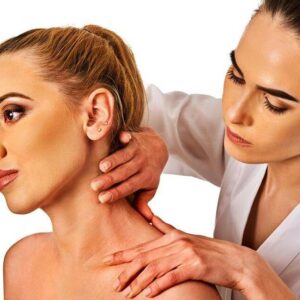Four Commonly Asked Questions About Molds
Four commonly asked questions about mold
Mold is a type of fungus that can be found indoors as well as outdoors. There are thousands of species of mold. Some of the common types of indoor mold are Penicillium, Aspergillus, Cladosporium, and Alternaria. However, it is not necessary to identify the species and the Center for Disease Prevention and Control (CDC) does not recommend routine sampling for mold.
Mold tends to gradually destroy the area where they grow and this can damage one’s home or office furnishings.

How does mold affect one’s health?
Not all people are affected by mold but there are some people who are sensitive to it, and they tend to show symptoms like wheezing, stuffy nose, and red or itchy skin and eyes.
- Some people who are allergic to mold or have been diagnosed with asthma tend to have more intense reactions.
- Also, severe reactions may occur among workers who are regularly exposed to mold in their occupational settings. Fever and shortness of breath are some of the severe reactions one may face.
- People who have a weak immune system like those who are receiving treatment for cancer, people who are under medications that suppress the immune system, or people who have had a stem cell transplant or an organ transplant are at a higher risk of being infected by mold. Some people may develop asthma due to the exposure to dampness and mold.
Which areas are highly prone to mold growth?
Mold is present everywhere and it tends to grow on any substance that has moisture present on them. They reproduce by spores that are carried by air currents. When these spores land on a moist surface, they begin to grow rapidly. Below are the areas that are prone to mold-
- Mold growth is commonly seen in indoor areas that are not completely dry like wet floors, leaky roofs, areas with indoor plumbing problems, flooding, leaking, etc.
- For mold to grow in a sustained manner, moisture is required along with other sources. Commonly used building materials like drywall, carpets, furring strips, plywood, and carpet padding are great places for mold to grow on.
- Also, if there are areas that face mold problems only during specific times of the year, then the chances are high that the place is too airtight.
What are the different types of samples conducted for mold testing?
Sampling is not usually recommended by the United States Environmental Protection Agency (EPA). Below are the different types of samples conducted for mold testing:
- Air: Air is one of the most common forms of sampling to assess mold levels. It often identifies hidden mold.
- Surface: Surface sampling helps in measuring the number of mold spores deposited in the dust, on indoor surfaces, or collected on tape.
- Swab: A cotton swab is rubbed across the area that has been tested and sent to the laboratory for further testing.
What are some of the professional black mold removal methods?
One needs to consider various factors while trying to remove black mold. The key factor is the size of the area that has been affected by mold. Most people prefer removing mold by themselves, but some may need professionals to do so. Below are some professional black mold removal methods-
- Mold Remediation: This is the first preference of most people when it comes to choosing professionals for mold removal. It is the ideal choice if there is a lot of water damage and the mold growth covers more than 10 square feet.
- Hiring a contractor : Hiring a contractor to do the mold cleanup is another option. However, one needs to ensure that the contractor has an experience in mold cleaning.
- Building cleaning and fixing experts: If the mold damage was caused due to contaminated water or any other sewage problems, calling a building cleaning and fixing expert is a great choice. These professionals help in clearing mold that is caused by contaminated water.





